Jordan - Part 1
Jordan quickly became one of our top travel destinations. Exploring beautiful deserts, wadis, and majestic ruins of ancient civilizations made for a delightful blend of experiences.
For us, being from the western United States, entering Jordan also brought a welcome sense of relaxation and comfort. The strict cultural mores of Saudi Arabia that we had been highly aware of and affected our interactions with people, evaporated. Still a Muslim country, Jordan wrote religious freedom into their constitution in 1952. This plus a long standing pursuit of international tourism made the country feel more relaxed for non-Muslim visitors. We had not realized how much background stress we had been carrying in Saudi Arabia until it disappeared. There was a mix in how people dressed, some women in traditional abayas, others in jeans. We kept to our modest dress code and felt completely comfortable.
Our two week, 700 mile route through Jordan and into Israel
As with other countries in the Middle East, we felt safe and basic necessities were easy to find. People embrace, understand and welcome the desire to be outdoors and camp. Tourism was down when we were there, visitors were avoiding the area because of the war with Israel and Hamas. This meant we stuck out, but were warmly greeted with teenagers running up to us on the street asking where we were from and looking for opportunities to practice English.
Beautiful Sharif Hussein Bin Ali Mosque
Onto the Wadi Rum Reserve which encompasses 280 square miles of colorful, varied and fascinating desert landscapes. With rock formations, narrow gorges, sand dunes it was a natural wonderland to explore. And of course, in a country so steeped in ancient human history, it also had cultural sites.
One of our first stops was the “Lawrence of Arabia” house used by TE Lawrence as a hideout when he was fighting alongside Arabians in their war with the Ottomans in 1917. The site itself predates Lawrence’s stay with evidence of 2000 years of occupation.
The whole Lawrence of Arabia story was a fascinating study in how ethnocentric our education can be. Our hazy memory of him was that we was a famous and heroic fighter. In fact he was a British archeologist who became enamored of all things Arabian and was instrumental in introducing the culture to the British world through his writing. He fought alongside Arab forces in the Arab Revolt. But your average Jordanian has never heard of him, he did not figure at all in their hero stories of the war.
Stopped by Lawrence of Arabia’s hideout
Camped against the cliffs at Wadi Rum
Roads were inaccurately mapped and rough, but that made the adventure even better. We saw few other people but were surprised by the number of empty camps set up Bedouin style for tourists. We guessed that when it is busy the area is hopping with people coming to experience the desert Bedouin style.
Exploring narrow canyons with rock carvings
Then from Wadi Rum, we made our way to Petra, an iconic bucket list place for us to visit. We pulled into the free parking lot adjacent to the visitor center and set our alarm to get up at the crack of dawn for an early entry.
Petra is one of the most amazing archeological sites in the world. The whole experience was magical. With our one day of admission, we made the most of it, walking 12 miles, climbing 1000 steps up to and back down from The Monastery and wending our way among and over cliffs to find “hidden” carvings (with the lack of people we had the incredible experience of being the only ones at many of the more remote sites).
Built by the Nabataeans, an ancient Arabian people, most of the carvings in the rock faces date back to the 1st century AD and were intended as decoration for tombs for their kings.
Entrance to Petra is a 1.2 km narrow canyon walk (called the Siq)
“The Treasury” carved out of the rock cliff
Not being early morning people, the 6am start was a push for us. But standing before the glory of these monuments as one of few visitors made it all worthwhile. There were more staff than visitors when we were there. It was a difficult time for tourism in Jordan and small business owners were suffering. We had empathy for them but were also enormously grateful to be at Petra at a time no one else was.
Carvings in the rock everywhere we looked
Camels available for hire for tired walkers
“The Theatre”
“The Palace Tomb”
Photos may be worth a 1000 words, but we still felt like even the photos cannot capture the scale and artistry of Petra. It was also extraordinary to be able to explore freely, climbing up to examine the carvings, being able to see the actual chisel marks and even the hand holds made for the talented climbers to get to the top to complete their work. We felt strangely honored and respected for the trust put in us not to harm or damage any of these ancient monuments (which of course we would never do).
Mosaic floor of a Byzantine Church
The Great Temple of Petra
So little is known about these ancient Nabataean Arabian people, but that allows for your imagination to go wild as you wander their ancient city.
Climbing the 1000 steps to the Monastery
As the day wore on we did see more visitors. It was a little disconcerting to pop out at the top by the Monastery and see van loads of tourists. There is a secondary entrance at this side of Petra and you can opt to enter here and walk your way down the steps, through the valley and out past the Treasury to the visitor’s center. This is a great option if you do not want to end your day completely worn out and exhausted as we did (but we were also happy and satiated).
After leaving the Monastery we returned on one last trail which took us off on our own again and felt mystical. The Wadi Farasah Trail winds you among intricately carved cliffs and eventually up to the HIgh Place of Sacrifice.
Petra is not flat!
View from the “High Place of Sacrifice” a name which heightens curiosity and imagination
There are many ways to tackle Petra, in retrospect, maybe we should have taken a taxi to the entrance by the Monastery and walked one way back through the whole valley to the main entrance. Or we could have purchased the two day pass and split up sections. But in the end we were thrilled with our long and tiring day and loved all our side ventures on trails that led out of the main valley floor. Somehow taking it all in at once made the experience huger and even more impressive. We left feeling awestruck and not sure what else Jordan could offer up to compare. But of course the dramatic scenery and history continued.

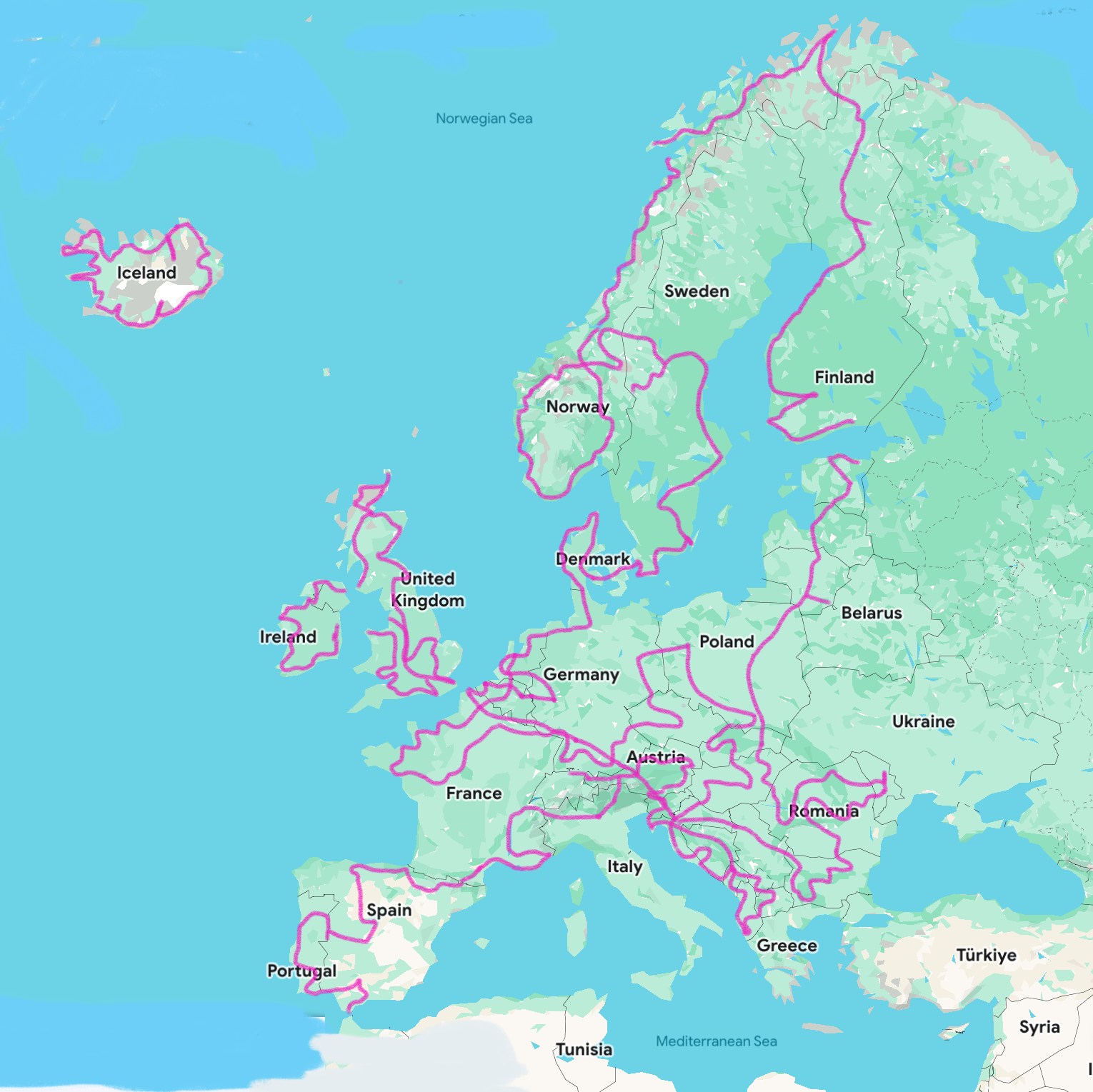
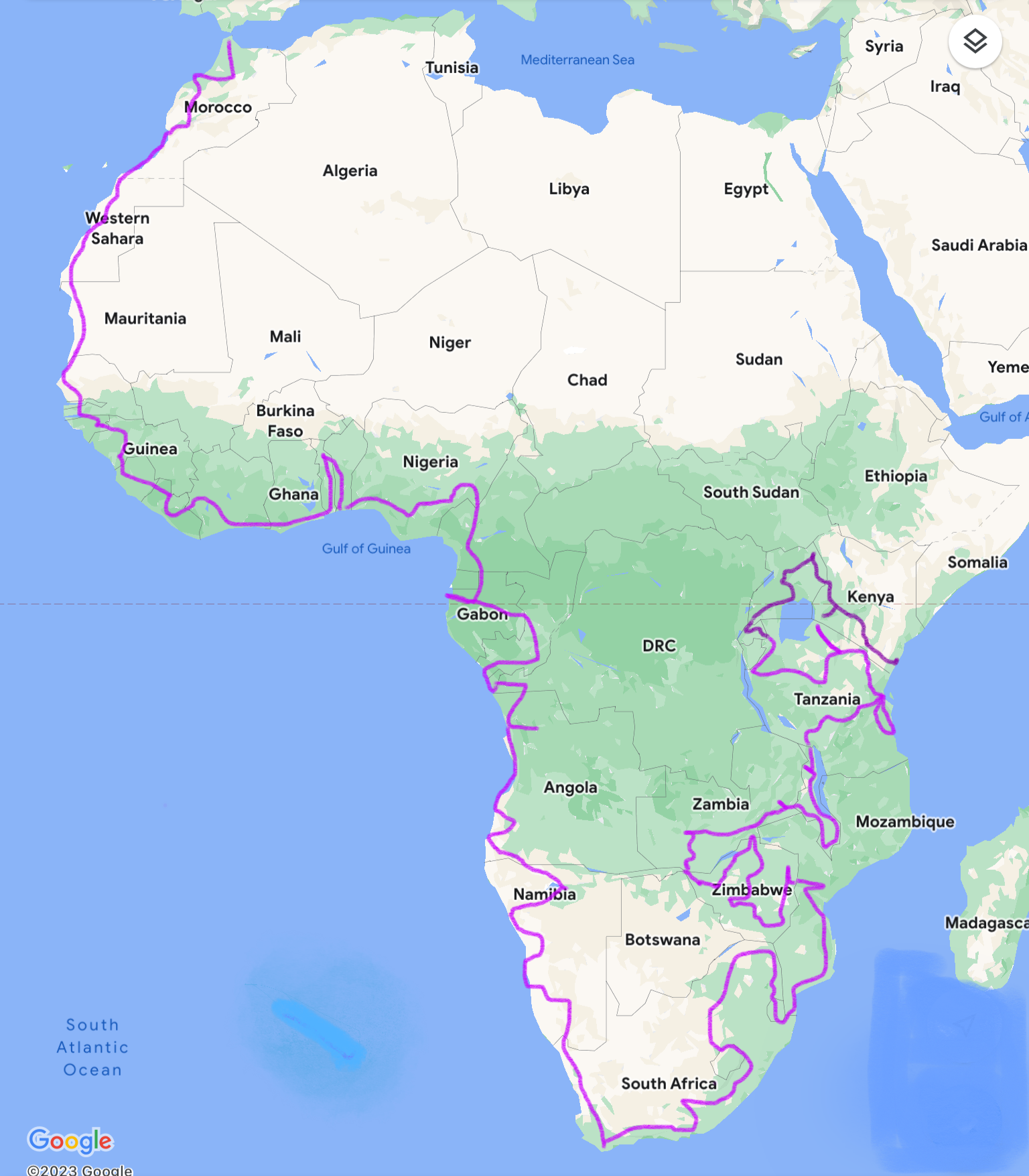
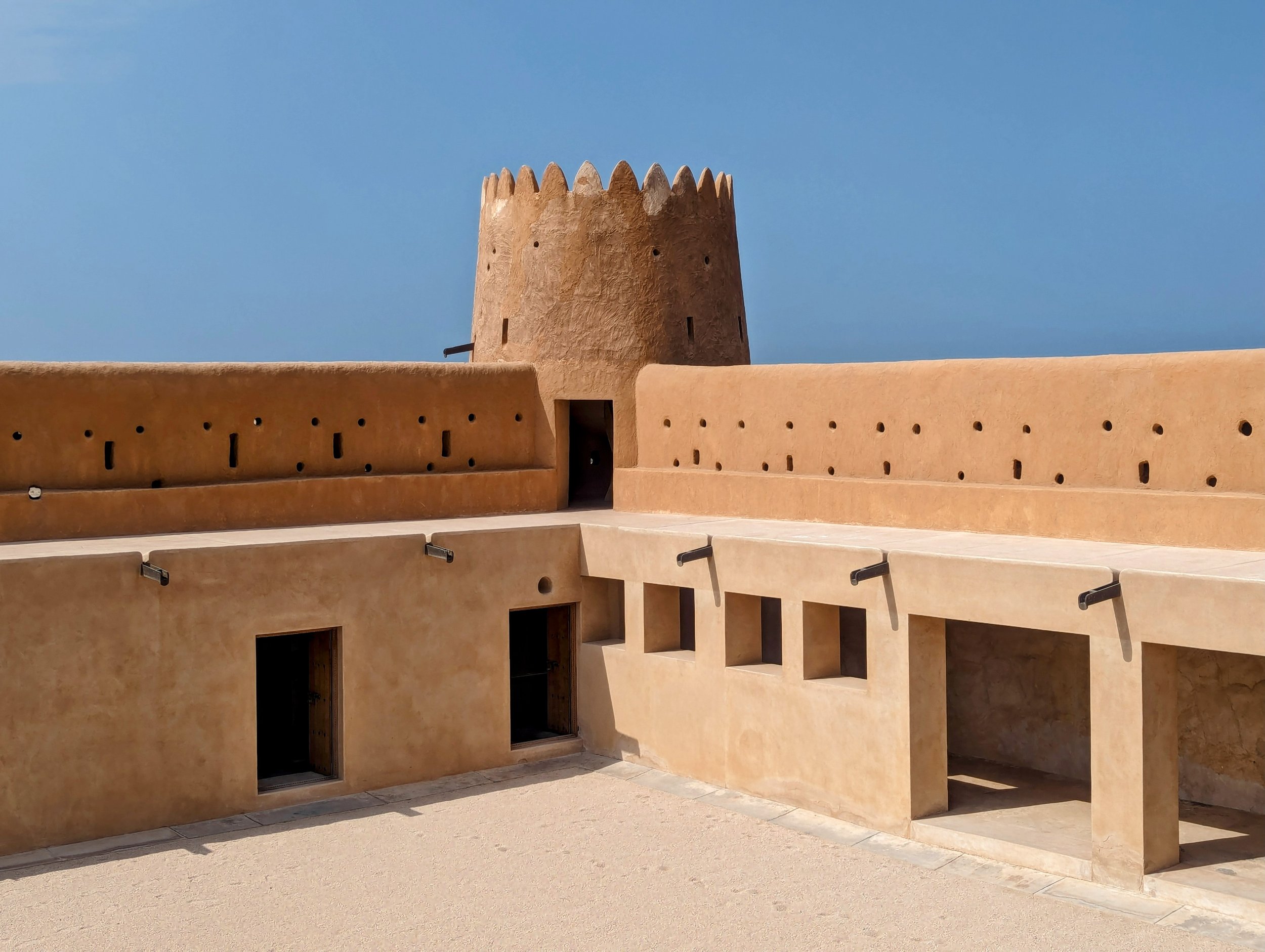
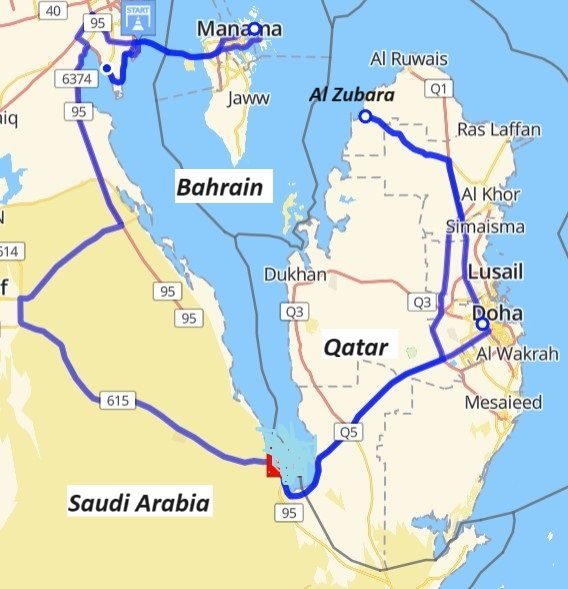
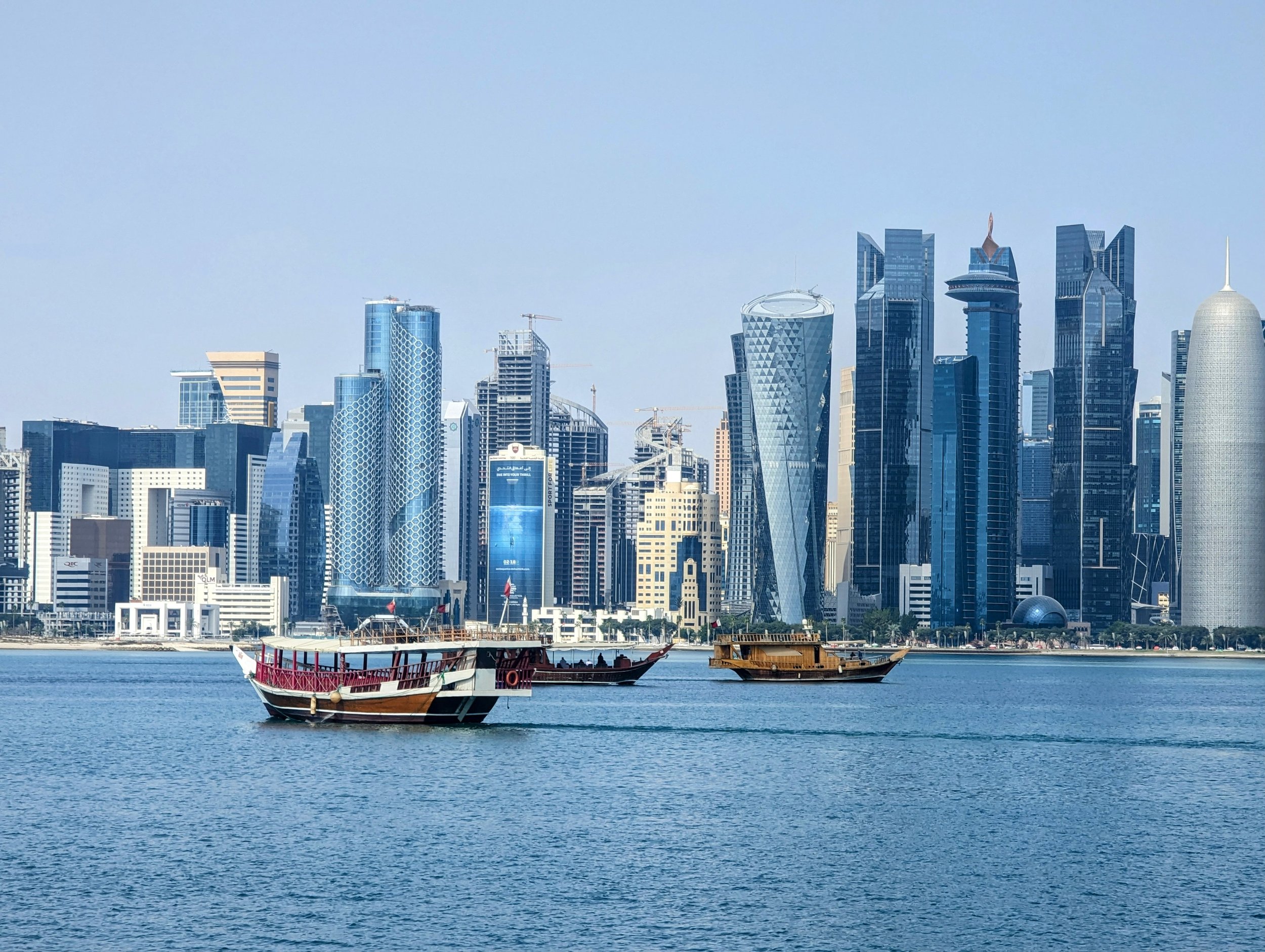

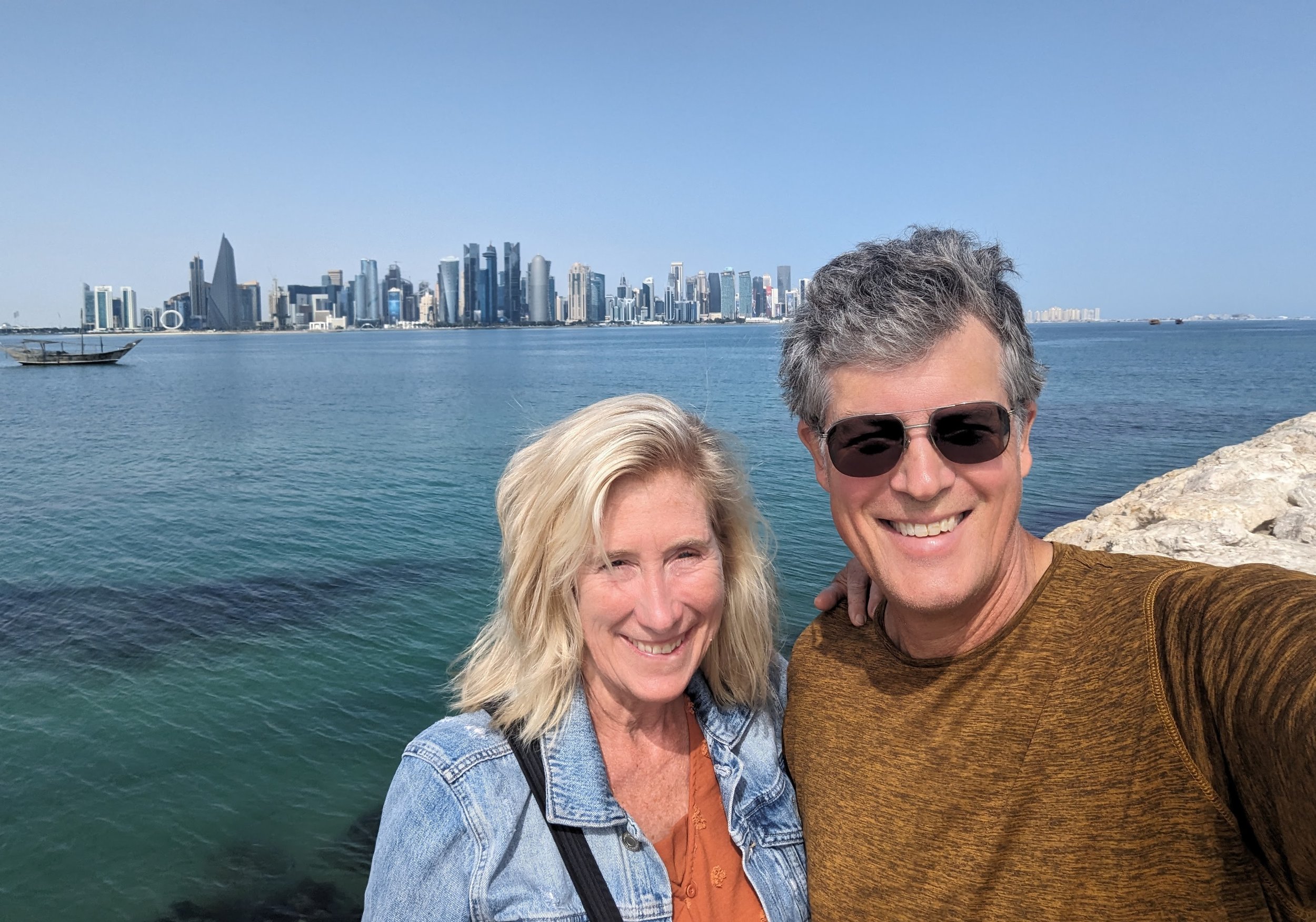
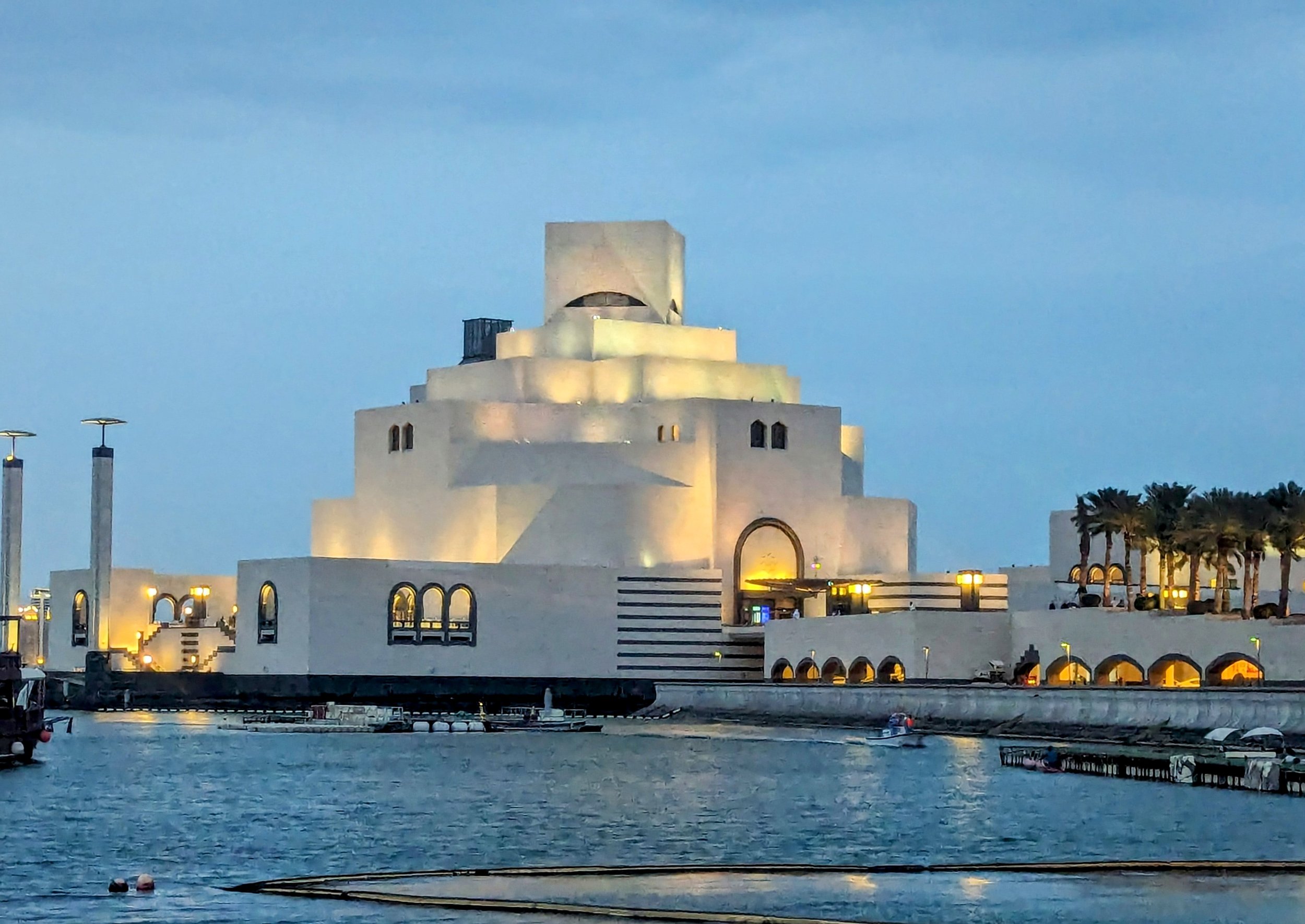
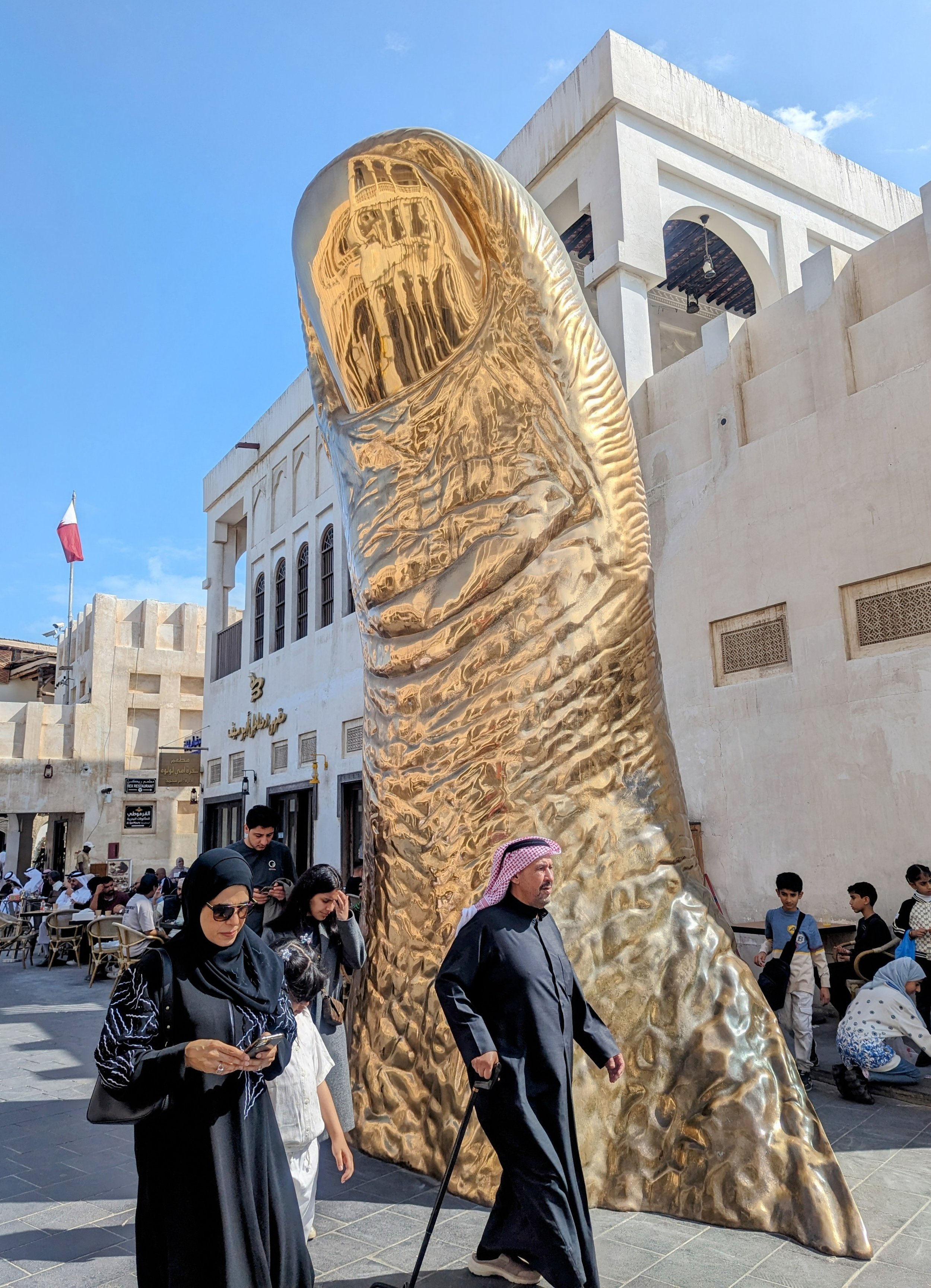

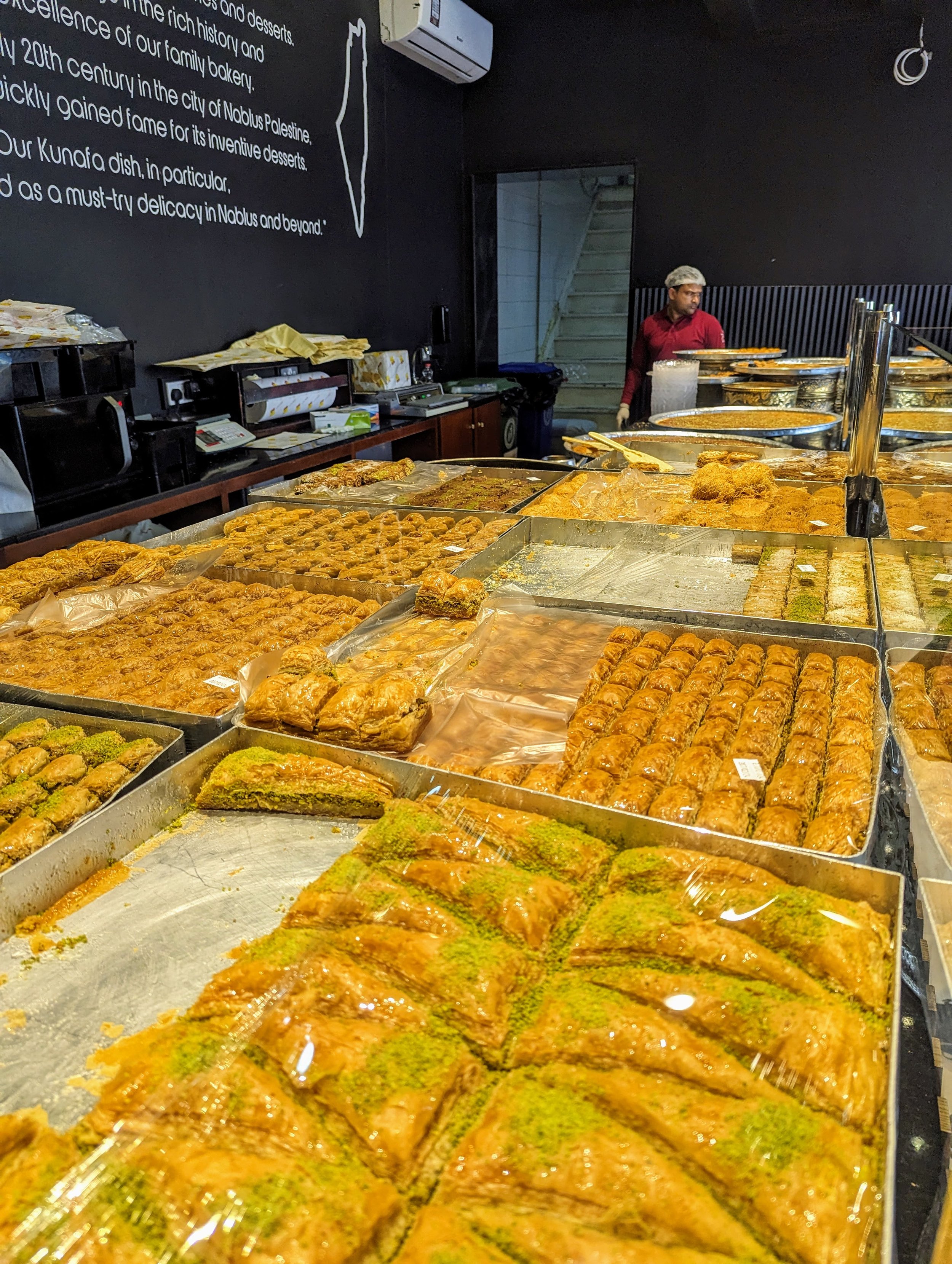

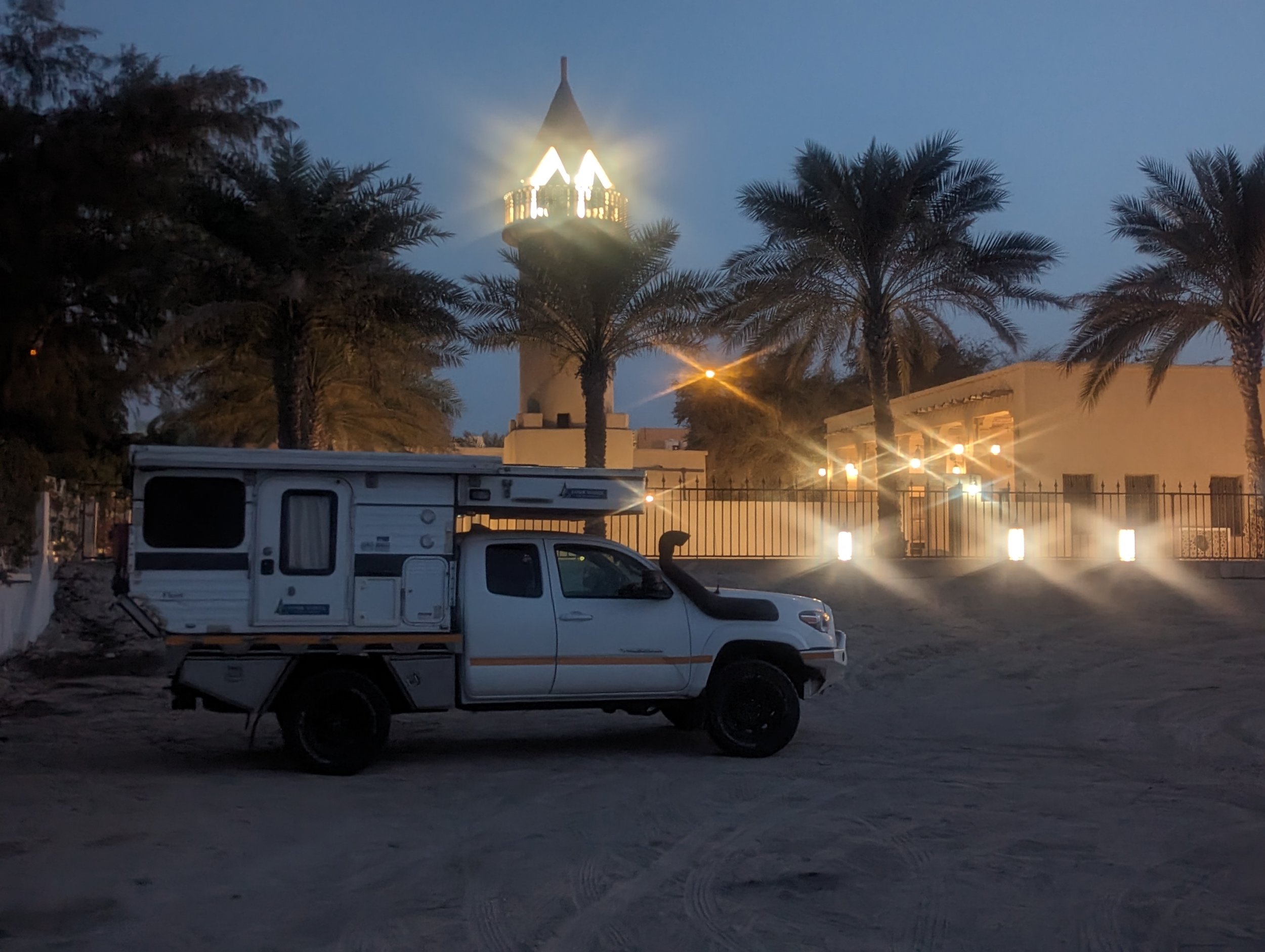

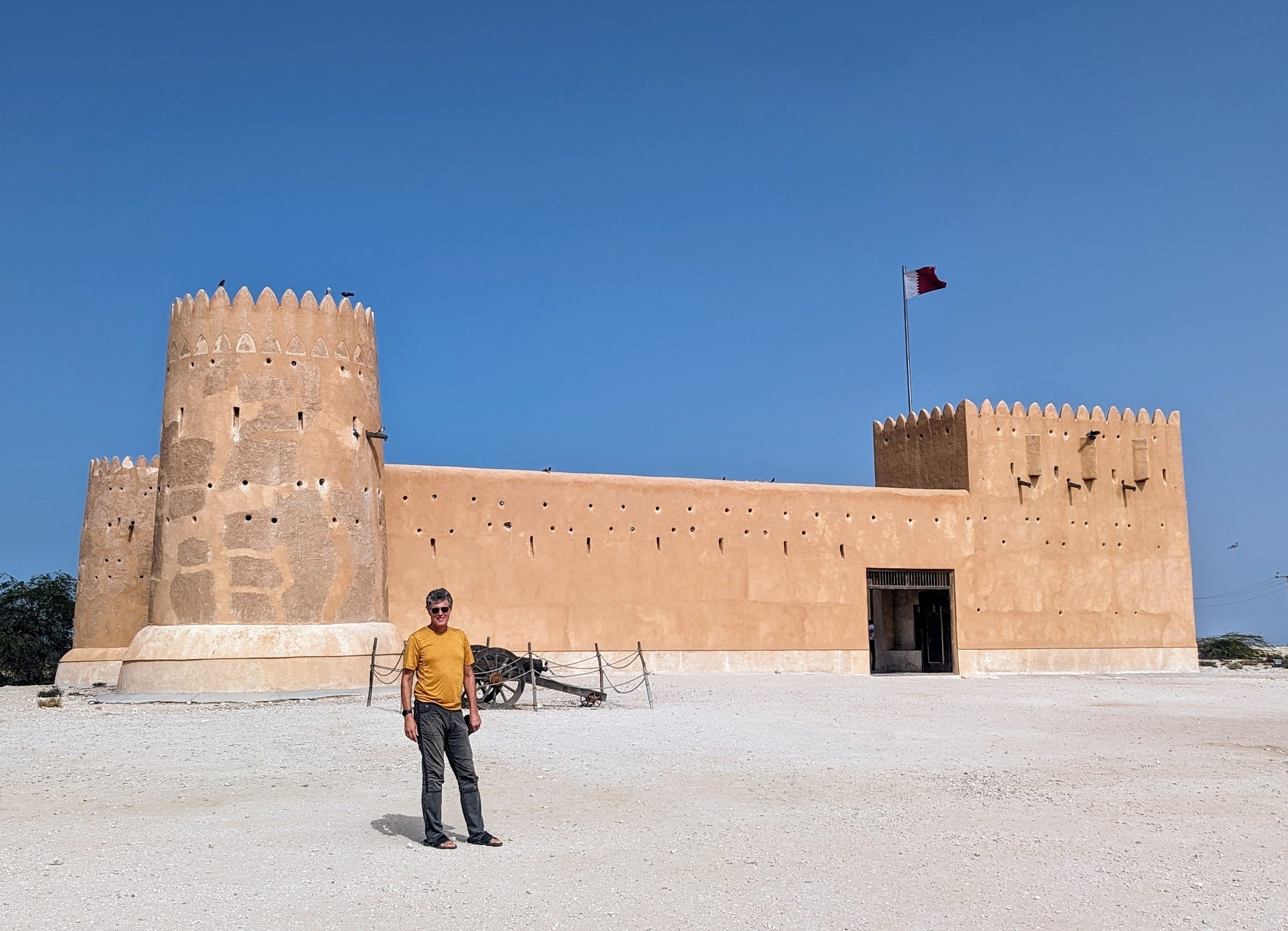
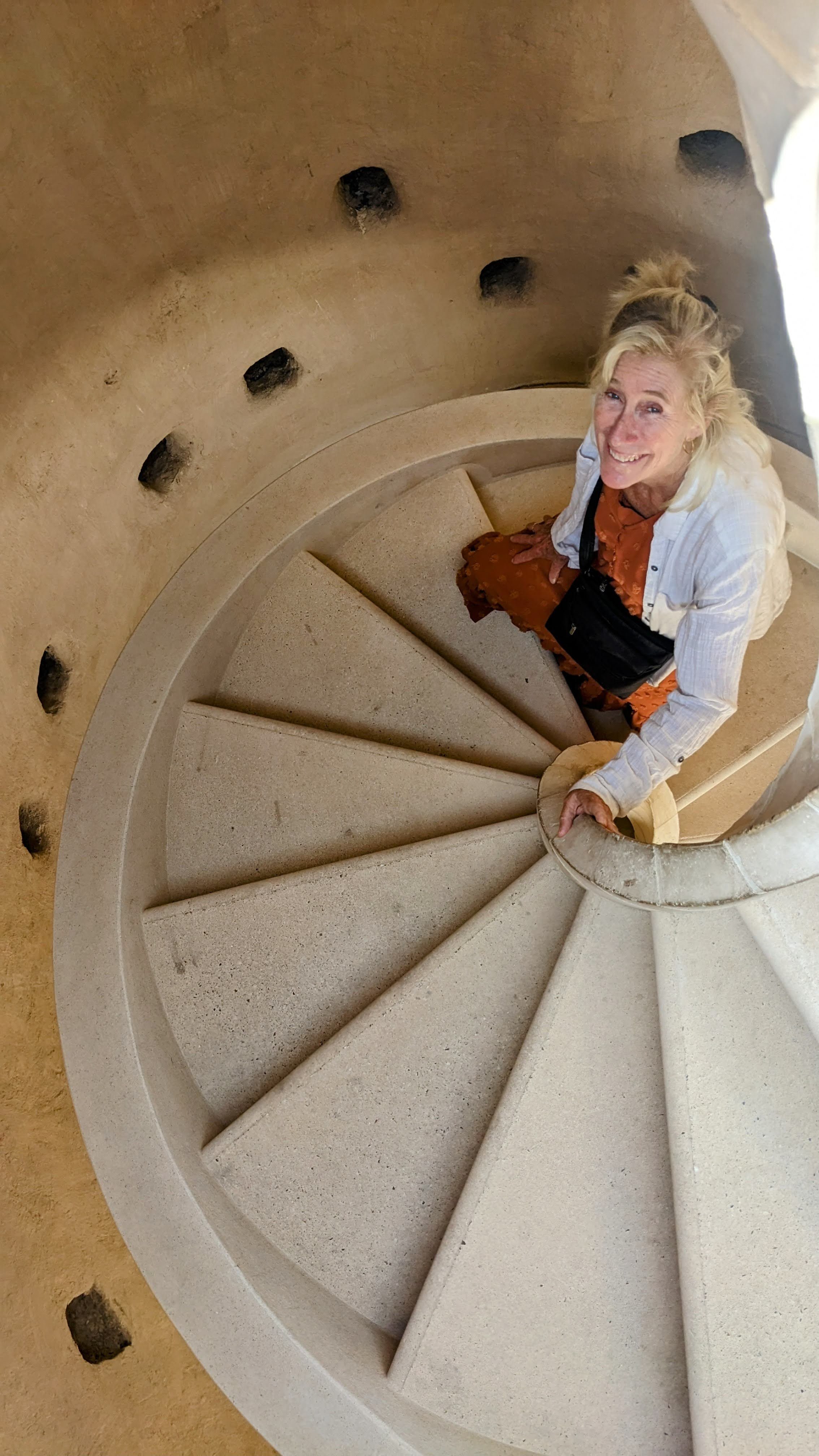

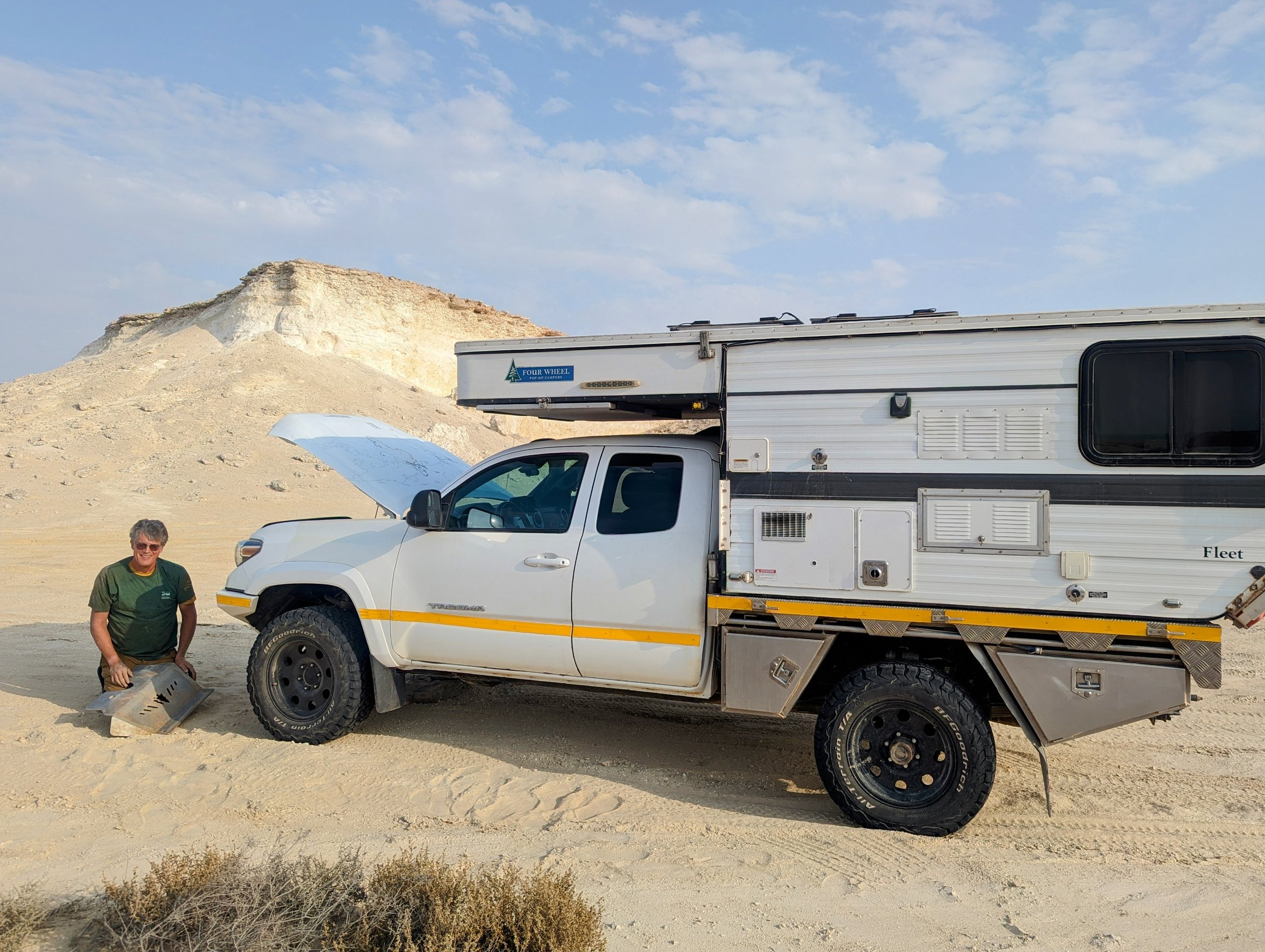
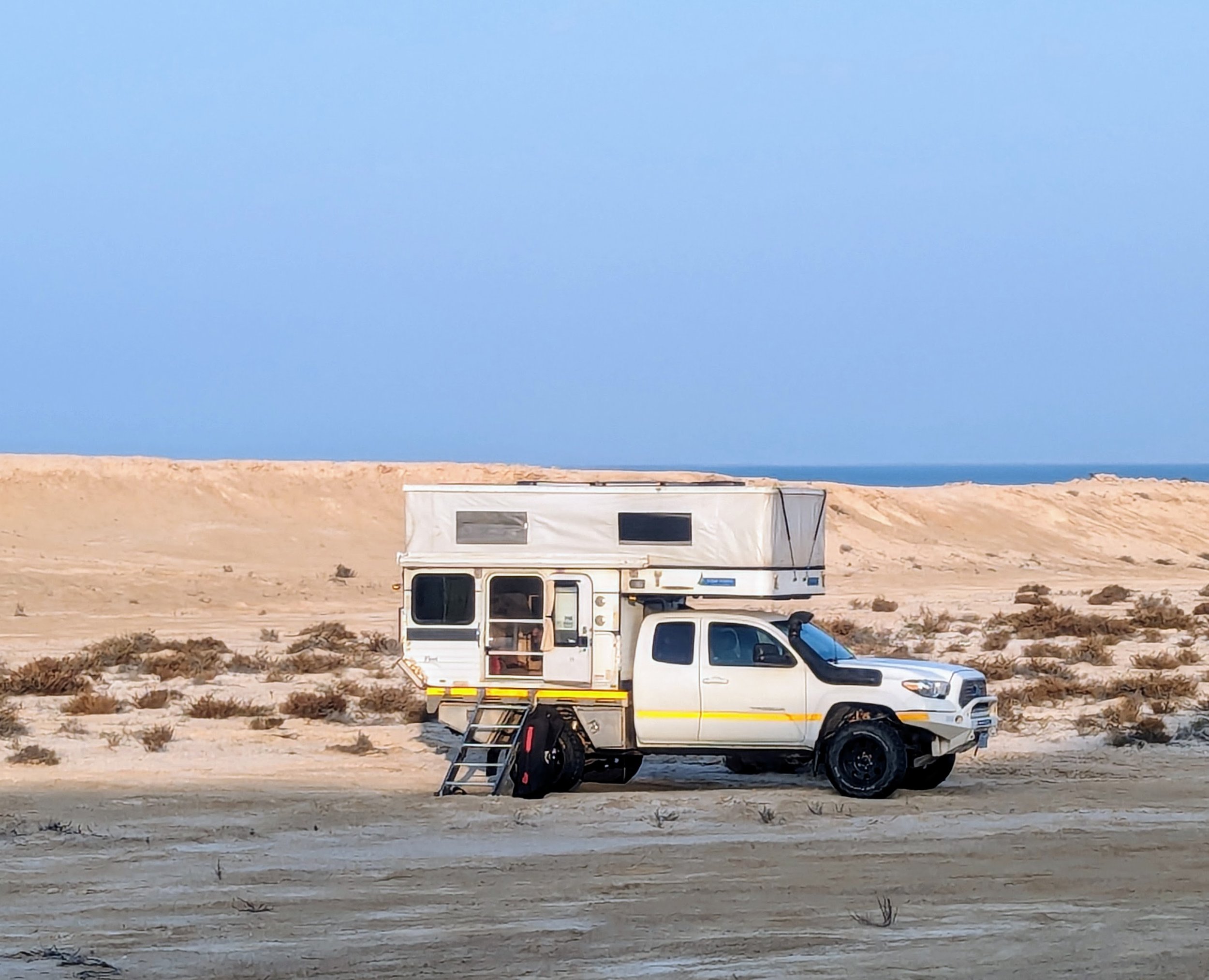
![[IMG] [IMG]](https://images.squarespace-cdn.com/content/v1/5eb85920d2ae880e0ff1526f/56f304cd-9823-40d5-a6d3-cb5f243dcad1/PXL_20240202_093126790.MP.jpg)
![[IMG] [IMG]](https://images.squarespace-cdn.com/content/v1/5eb85920d2ae880e0ff1526f/6a1d1135-e09b-4b7d-b8f7-f1b73767d838/PXL_20240202_101749765.jpg)
![[IMG] [IMG]](https://images.squarespace-cdn.com/content/v1/5eb85920d2ae880e0ff1526f/b5c9d562-d338-4887-9138-f41e8e83e3a2/PXL_20240202_101619248%7E2.jpg)
![[IMG] [IMG]](https://images.squarespace-cdn.com/content/v1/5eb85920d2ae880e0ff1526f/cb6d47c9-76ef-4af0-afc2-bd4a13179b51/PXL_20240204_110952802.jpg)
![[IMG] [IMG]](https://images.squarespace-cdn.com/content/v1/5eb85920d2ae880e0ff1526f/eac4fdaf-ed64-4c3e-8e02-b689c296a9ee/PXL_20240204_113659039%7E2.jpg)
![[IMG] [IMG]](https://images.squarespace-cdn.com/content/v1/5eb85920d2ae880e0ff1526f/19e5e69f-f0cd-4e07-ab9c-b2132f73e0f0/PXL_20240205_070207908%7E2.jpg)
![[IMG] [IMG]](https://images.squarespace-cdn.com/content/v1/5eb85920d2ae880e0ff1526f/d3e835ba-bef9-42b9-9fe2-f51302df2f9d/PXL_20240204_103331159%7E2.jpg)
![[IMG] [IMG]](https://images.squarespace-cdn.com/content/v1/5eb85920d2ae880e0ff1526f/50779d7d-52c3-4c5f-bec9-20cbfe72dd74/PXL_20240205_084218653.jpg)
![[IMG] [IMG]](https://images.squarespace-cdn.com/content/v1/5eb85920d2ae880e0ff1526f/5fdf2dc8-8c48-40c5-8ee6-b5a8592b33e1/PXL_20240205_081344876.jpg)
![[IMG] [IMG]](https://images.squarespace-cdn.com/content/v1/5eb85920d2ae880e0ff1526f/711d7a5a-df77-474b-9c75-7a99a0c57532/PXL_20240205_081436385.jpg)
![[IMG] [IMG]](https://images.squarespace-cdn.com/content/v1/5eb85920d2ae880e0ff1526f/40e5be96-ad37-4f5f-a9fd-cee072ef84c3/PXL_20240205_081853423.jpg)
![[IMG] [IMG]](https://images.squarespace-cdn.com/content/v1/5eb85920d2ae880e0ff1526f/d25491c6-0242-4437-834a-652d51d15948/PXL_20240205_083301129.jpg)
![[IMG] [IMG]](https://images.squarespace-cdn.com/content/v1/5eb85920d2ae880e0ff1526f/4546d2a5-6576-4ecd-b25e-d3679b9754c9/PXL_20240205_090905434.jpg)
![[IMG] [IMG]](https://images.squarespace-cdn.com/content/v1/5eb85920d2ae880e0ff1526f/fb6a7571-cb2f-4171-9473-25d34cc3f3ef/PXL_20240205_112345756%7E2.jpg)
![[IMG] [IMG]](https://images.squarespace-cdn.com/content/v1/5eb85920d2ae880e0ff1526f/f337eae1-50ca-46e0-94cf-9f6b44923295/PXL_20240205_112718506%7E2.jpg)
![[IMG] [IMG]](https://images.squarespace-cdn.com/content/v1/5eb85920d2ae880e0ff1526f/d51ce89d-2d1e-47a4-a9a7-cd21b4976d53/PXL_20240205_112534440%7E2.jpg)
![[IMG] [IMG]](https://images.squarespace-cdn.com/content/v1/5eb85920d2ae880e0ff1526f/fb1626a0-1d3e-4055-b807-939e05334578/PXL_20240206_141252580.jpg)
![[IMG] [IMG]](https://images.squarespace-cdn.com/content/v1/5eb85920d2ae880e0ff1526f/1cc17bb1-efa8-422a-8fc6-7b8fbb7ed3b2/Saudi.jpg)
![[IMG] [IMG]](https://images.squarespace-cdn.com/content/v1/5eb85920d2ae880e0ff1526f/5d38cda2-afa4-4333-ba58-71952e151ab9/PXL_20240129_041017701.jpg)
![[IMG] [IMG]](https://images.squarespace-cdn.com/content/v1/5eb85920d2ae880e0ff1526f/7512d858-380e-4994-ac75-1c0a9ed319ea/PXL_20240129_082648513.jpg)
![[IMG] [IMG]](https://images.squarespace-cdn.com/content/v1/5eb85920d2ae880e0ff1526f/d8dd6a69-aa06-4251-a38a-34f58a25a333/PXL_20240201_141251772.jpg)
![[IMG] [IMG]](https://images.squarespace-cdn.com/content/v1/5eb85920d2ae880e0ff1526f/de41d470-d7e5-459c-909e-09113ba08bb2/PXL_20240206_131032936.jpg)
![[IMG] [IMG]](https://images.squarespace-cdn.com/content/v1/5eb85920d2ae880e0ff1526f/45f6e39f-e241-4516-b843-dc0fa38dbf49/PXL_20240206_143837591_exported_927_1707471261390%7E2.jpg)
![[IMG] [IMG]](https://images.squarespace-cdn.com/content/v1/5eb85920d2ae880e0ff1526f/ae9644fa-551e-4d55-b583-ab9a3397f29e/PXL_20240209_122018210_exported_583_1707541523761.jpg)
![[IMG] [IMG]](https://images.squarespace-cdn.com/content/v1/5eb85920d2ae880e0ff1526f/e0ac92c9-d6e0-43f9-ba04-b0a0869ba4b3/PXL_20240209_132141300%7E2.jpg)
![[IMG] [IMG]](https://images.squarespace-cdn.com/content/v1/5eb85920d2ae880e0ff1526f/c7abb4c3-d86d-4e0e-a29a-0ac8b0e5d472/PXL_20240210_121511549%7E2.jpg)
![[IMG] [IMG]](https://images.squarespace-cdn.com/content/v1/5eb85920d2ae880e0ff1526f/96f3570e-b6ca-47ce-bdf9-f5d22c534c0b/PXL_20240211_070956536%7E2.jpg)
![[IMG] [IMG]](https://images.squarespace-cdn.com/content/v1/5eb85920d2ae880e0ff1526f/b046e7ac-885f-420b-a833-6b72710480ea/PXL_20240211_071327036.MP%7E2.jpg)
![[IMG] [IMG]](https://images.squarespace-cdn.com/content/v1/5eb85920d2ae880e0ff1526f/a18002a7-6839-4ce1-87df-7bdbfe0453e2/PXL_20240211_092956178%7E2.jpg)
![[IMG] [IMG]](https://images.squarespace-cdn.com/content/v1/5eb85920d2ae880e0ff1526f/697bda25-ec24-4b47-969d-58734996bda8/PXL_20240211_101234797.MP%7E2.jpg)
![[IMG] [IMG]](https://images.squarespace-cdn.com/content/v1/5eb85920d2ae880e0ff1526f/4981b861-f99f-4d59-a1a6-26f4b8aceb09/PXL_20240211_110103244%7E2.jpg)
![[IMG] [IMG]](https://images.squarespace-cdn.com/content/v1/5eb85920d2ae880e0ff1526f/b91692a9-810d-42d5-89f8-7e31d94db48a/PXL_20240211_110130089%7E2.jpg)
![[IMG] [IMG]](https://images.squarespace-cdn.com/content/v1/5eb85920d2ae880e0ff1526f/33cecd73-aa81-41b6-a233-bf2e524e8e4f/PXL_20240212_044557046%7E2.jpg)
![[IMG] [IMG]](https://images.squarespace-cdn.com/content/v1/5eb85920d2ae880e0ff1526f/22d092fe-1462-4709-a122-e91caafbb68a/PXL_20240214_114423077%7E2.jpg)
![[IMG] [IMG]](https://images.squarespace-cdn.com/content/v1/5eb85920d2ae880e0ff1526f/2a03a840-c56a-485f-9409-7b905fce53a7/PXL_20240214_115022473%7E2.jpg)
![[IMG] [IMG]](https://images.squarespace-cdn.com/content/v1/5eb85920d2ae880e0ff1526f/ef72341d-0f76-4a61-902b-cb093d2ea346/PXL_20240214_114756420%7E2.jpg)
![[IMG] [IMG]](https://images.squarespace-cdn.com/content/v1/5eb85920d2ae880e0ff1526f/4141b352-490e-4b1b-ae8a-a0972f5e0bfb/PXL_20240214_114001014%7E2.jpg)
![[IMG] [IMG]](https://images.squarespace-cdn.com/content/v1/5eb85920d2ae880e0ff1526f/fc7799bf-807f-48b3-ae4f-873e9a1707de/PXL_20240216_133921861%7E3.jpg)
![[IMG] [IMG]](https://images.squarespace-cdn.com/content/v1/5eb85920d2ae880e0ff1526f/f48acb96-1ed1-483e-a18d-f8c60e9a14ad/PXL_20240217_120718906%7E2.jpg)
![[IMG] [IMG]](https://images.squarespace-cdn.com/content/v1/5eb85920d2ae880e0ff1526f/e418cc45-1ff9-4d4d-afcb-2e21dd63fcd6/PXL_20240217_122016537%7E2.jpg)
![[IMG] [IMG]](https://images.squarespace-cdn.com/content/v1/5eb85920d2ae880e0ff1526f/5430a563-3db2-4389-992f-72599a297bf8/PXL_20240217_122121422%7E2.jpg)
![[IMG] [IMG]](https://images.squarespace-cdn.com/content/v1/5eb85920d2ae880e0ff1526f/4b75fce8-26d5-4514-ac59-9a3bf9fdb028/PXL_20240217_123741722.jpg)
![[IMG] [IMG]](https://images.squarespace-cdn.com/content/v1/5eb85920d2ae880e0ff1526f/0950dbf3-01af-4ae3-94d5-75511ad43c6e/PXL_20240217_125232362%7E2.jpg)
![[IMG] [IMG]](https://images.squarespace-cdn.com/content/v1/5eb85920d2ae880e0ff1526f/d1347adb-70d4-45f2-9118-fe74a00f71ff/PXL_20240217_140233801%7E2.jpg)
![[IMG] [IMG]](https://images.squarespace-cdn.com/content/v1/5eb85920d2ae880e0ff1526f/3ae9fd43-7444-483b-985a-d21bdd2f9f1c/PXL_20240217_144112989%7E2.jpg)
![[IMG] [IMG]](https://images.squarespace-cdn.com/content/v1/5eb85920d2ae880e0ff1526f/fc8d4e13-bdef-47e9-9bff-f9555caf3da3/PXL_20240217_144649849%7E2.jpg)
![[IMG] [IMG]](https://images.squarespace-cdn.com/content/v1/5eb85920d2ae880e0ff1526f/f51d602b-83b5-49e1-a572-c6451bdf45c3/PXL_20240217_143452536%7E2.jpg)
![[IMG] [IMG]](https://images.squarespace-cdn.com/content/v1/5eb85920d2ae880e0ff1526f/2e3ab250-20ee-4716-a34e-d2e199c755ca/PXL_20240218_091858288%7E2.jpg)
![[IMG] [IMG]](https://images.squarespace-cdn.com/content/v1/5eb85920d2ae880e0ff1526f/895dba42-41e6-48bc-9e94-6ea2241faec7/PXL_20240218_093623523%7E2.jpg)
![[IMG] [IMG]](https://images.squarespace-cdn.com/content/v1/5eb85920d2ae880e0ff1526f/fb5df91b-5f73-4b70-adae-dd62c85c7b07/PXL_20240218_094948902%7E2.jpg)
![[IMG] [IMG]](https://images.squarespace-cdn.com/content/v1/5eb85920d2ae880e0ff1526f/4a630f2b-7a22-420f-889f-3106e43ff7bf/original_9423cb0a-9cfa-4e24-9e5b-73b3ed827e36_PXL_20240218_101124582.jpg)
![[IMG] [IMG]](https://images.squarespace-cdn.com/content/v1/5eb85920d2ae880e0ff1526f/4f6b3a64-58b8-4623-813d-0fdda97f4593/PXL_20240218_102537268.jpg)
![[IMG] [IMG]](https://images.squarespace-cdn.com/content/v1/5eb85920d2ae880e0ff1526f/473a7375-27d5-40b5-8959-66081b9e8f67/PXL_20240218_102926952%7E2.jpg)
![[IMG] [IMG]](https://images.squarespace-cdn.com/content/v1/5eb85920d2ae880e0ff1526f/e84d4cb5-292a-4d65-9e95-d3cbf68253b8/PXL_20240218_125459098%7E2.jpg)
![[IMG] [IMG]](https://images.squarespace-cdn.com/content/v1/5eb85920d2ae880e0ff1526f/ec20a47a-2546-4ff7-b9db-8febd659fc71/original_a9a342fa-ebab-42b8-9c93-ac8c141d3e32_PXL_20240219_110514598.jpg)
![[IMG] [IMG]](https://images.squarespace-cdn.com/content/v1/5eb85920d2ae880e0ff1526f/5deb924a-8ebb-49a7-a702-737f874149f7/PXL_20240220_051742516%7E2.jpg)
![[IMG] [IMG]](https://images.squarespace-cdn.com/content/v1/5eb85920d2ae880e0ff1526f/f3d09bde-180a-4664-8660-36c948b38b44/Jordan+%26+Israel.jpg)
![[IMG] [IMG]](https://images.squarespace-cdn.com/content/v1/5eb85920d2ae880e0ff1526f/d314b8c3-fca9-439c-9776-7853b62b9e5f/PXL_20240221_102158427%7E2.jpg)
![[IMG] [IMG]](https://images.squarespace-cdn.com/content/v1/5eb85920d2ae880e0ff1526f/0d8f357a-ba47-4a0c-ae0a-b4e626dc24ce/PXL_20240223_102545165%7E2.jpg)
![[IMG] [IMG]](https://images.squarespace-cdn.com/content/v1/5eb85920d2ae880e0ff1526f/bf8f76eb-ec01-4af1-aa4b-f4223fe07651/PXL_20240223_142650521%7E2.jpg)
![[IMG] [IMG]](https://images.squarespace-cdn.com/content/v1/5eb85920d2ae880e0ff1526f/8a3b3213-95be-4441-8515-4c3fa171b93d/PXL_20240224_111601026%7E2.jpg)
![[IMG] [IMG]](https://images.squarespace-cdn.com/content/v1/5eb85920d2ae880e0ff1526f/6ad4e799-949e-49f2-a8b6-ed2d51153fe6/PXL_20240224_111822971%7E2.jpg)
![[IMG] [IMG]](https://images.squarespace-cdn.com/content/v1/5eb85920d2ae880e0ff1526f/cf1665d0-8d0c-4feb-a78e-a26466d4a5e4/PXL_20240225_040841544%7E2.jpg)
![[IMG] [IMG]](https://images.squarespace-cdn.com/content/v1/5eb85920d2ae880e0ff1526f/62ec69e2-aa64-40c4-bf40-f31a8bd67d22/PXL_20240225_042441421.MP%7E2.jpg)
![[IMG] [IMG]](https://images.squarespace-cdn.com/content/v1/5eb85920d2ae880e0ff1526f/37f78f7f-cfed-41be-913b-8c59eb262cf8/PXL_20240225_045219007_exported_333_1709034539504%7E2.jpg)
![[IMG] [IMG]](https://images.squarespace-cdn.com/content/v1/5eb85920d2ae880e0ff1526f/0c521c5a-be4d-493d-b58f-c645cb6597d7/PXL_20240225_050950222%7E2.jpg)
![[IMG] [IMG]](https://images.squarespace-cdn.com/content/v1/5eb85920d2ae880e0ff1526f/f86eaa10-51db-433a-8648-e84132ca94fd/PXL_20240225_051053064%7E2.jpg)
![[IMG] [IMG]](https://images.squarespace-cdn.com/content/v1/5eb85920d2ae880e0ff1526f/5b122b0e-38ce-48a2-9815-40ae53b753ab/PXL_20240225_052407704%7E2.jpg)
![[IMG] [IMG]](https://images.squarespace-cdn.com/content/v1/5eb85920d2ae880e0ff1526f/16aa1f9b-b596-45e2-924e-39d1728d811e/PXL_20240225_054419827%7E3.jpg)
![[IMG] [IMG]](https://images.squarespace-cdn.com/content/v1/5eb85920d2ae880e0ff1526f/7ff3d409-cd56-4ff5-a4a9-0d1205a87041/PXL_20240225_060032301%7E2.jpg)
![[IMG] [IMG]](https://images.squarespace-cdn.com/content/v1/5eb85920d2ae880e0ff1526f/5b705dd9-54ed-4640-95d5-ed8d8ee1e5ab/PXL_20240225_061625471%7E2.jpg)
![[IMG] [IMG]](https://images.squarespace-cdn.com/content/v1/5eb85920d2ae880e0ff1526f/00ce82ed-79ff-4f4e-9478-10ccbd991cdd/PXL_20240225_082651966%7E2.jpg)
![[IMG] [IMG]](https://images.squarespace-cdn.com/content/v1/5eb85920d2ae880e0ff1526f/b9bf3199-76d3-4a23-9634-119348941f7b/PXL_20240225_102854647%7E2.jpg)
![[IMG] [IMG]](https://images.squarespace-cdn.com/content/v1/5eb85920d2ae880e0ff1526f/1c87c5e9-7cbc-45b5-9ed6-d517b454f289/PXL_20240225_103525322%7E2.jpg)
![[IMG] [IMG]](https://images.squarespace-cdn.com/content/v1/5eb85920d2ae880e0ff1526f/9673c962-e467-4f40-b90a-62865e4313df/PXL_20240225_111001360%7E2.jpg)
![[IMG] [IMG]](https://images.squarespace-cdn.com/content/v1/5eb85920d2ae880e0ff1526f/a7d53b73-1e1f-46b7-93c8-382282517553/PXL_20240225_142735810%7E2.jpg)
![[IMG] [IMG]](https://images.squarespace-cdn.com/content/v1/5eb85920d2ae880e0ff1526f/55dd96c0-b1c2-40b3-a944-6e0cb10f43f2/PXL_20240226_101148338.jpg)
![[IMG] [IMG]](https://images.squarespace-cdn.com/content/v1/5eb85920d2ae880e0ff1526f/e8767144-0c55-4252-9110-8775df817788/PXL_20240226_140345675%7E2.jpg)
![[IMG] [IMG]](https://images.squarespace-cdn.com/content/v1/5eb85920d2ae880e0ff1526f/6282db04-56a0-4698-bf9c-f3028e7b5882/PXL_20240226_143859340%7E2.jpg)
![[IMG] [IMG]](https://images.squarespace-cdn.com/content/v1/5eb85920d2ae880e0ff1526f/5b1b3c39-1640-47fb-8155-ea6daea2ad08/PXL_20240227_082535265%7E2.jpg)
![[IMG] [IMG]](https://images.squarespace-cdn.com/content/v1/5eb85920d2ae880e0ff1526f/599b115a-1846-4a7c-8f1d-cff66d8351b7/PXL_20240227_084645895%7E2.jpg)
![[IMG] [IMG]](https://images.squarespace-cdn.com/content/v1/5eb85920d2ae880e0ff1526f/3d3b3776-b0cf-4038-b337-877bdddcddf7/PXL_20240227_102620896%7E2.jpg)
![[IMG] [IMG]](https://images.squarespace-cdn.com/content/v1/5eb85920d2ae880e0ff1526f/7cdb70cf-3099-4fa2-a28d-d30e1838d4b2/PXL_20240227_102725356%7E2.jpg)
![[IMG] [IMG]](https://images.squarespace-cdn.com/content/v1/5eb85920d2ae880e0ff1526f/c22c1795-0dd8-4bf2-8462-8ba16b1289b6/PXL_20240228_081200508%7E2.jpg)
![[IMG] [IMG]](https://images.squarespace-cdn.com/content/v1/5eb85920d2ae880e0ff1526f/558febaa-50a4-4939-a8b2-f144b10a3bc5/PXL_20240228_130455631.jpg)
![[IMG] [IMG]](https://images.squarespace-cdn.com/content/v1/5eb85920d2ae880e0ff1526f/9acf309b-47bc-4deb-86d8-983070c5869c/PXL_20240229_084728348.%7E2_exported_66_1709277886151%7E2.jpg)
![[IMG] [IMG]](https://images.squarespace-cdn.com/content/v1/5eb85920d2ae880e0ff1526f/f377a027-3f22-4d53-94e4-65415a9e487f/PXL_20240229_132533813%7E2.jpg)
![[IMG] [IMG]](https://images.squarespace-cdn.com/content/v1/5eb85920d2ae880e0ff1526f/00b61069-87c5-4a28-9366-4b1bdd79aa6c/PXL_20240229_135544573%7E2.jpg)
![[IMG] [IMG]](https://images.squarespace-cdn.com/content/v1/5eb85920d2ae880e0ff1526f/75e2a295-f5f9-4979-a67e-a34070eb3ef5/PXL_20240229_141306593%7E3.jpg)
![[IMG] [IMG]](https://images.squarespace-cdn.com/content/v1/5eb85920d2ae880e0ff1526f/19ce461f-7af5-4986-ad60-0c600d108292/PXL_20240229_142240041_exported_1200_1709277184509%7E2.jpg)
![[IMG] [IMG]](https://images.squarespace-cdn.com/content/v1/5eb85920d2ae880e0ff1526f/c728d4ff-9daa-45a4-a580-c2c2e1c6ed58/PXL_20240301_111317830%7E2.jpg)
![[IMG] [IMG]](https://images.squarespace-cdn.com/content/v1/5eb85920d2ae880e0ff1526f/660b0bc0-71c1-48c8-b656-311429d7234d/PXL_20240301_112340440%7E2.jpg)
![[IMG] [IMG]](https://images.squarespace-cdn.com/content/v1/5eb85920d2ae880e0ff1526f/cbb9db02-d1ee-489c-af07-ccb423ee9553/PXL_20240301_120844990.jpg)
![[IMG] [IMG]](https://images.squarespace-cdn.com/content/v1/5eb85920d2ae880e0ff1526f/fe9d436e-ad9f-4b1c-8910-c985c5146a2b/PXL_20240302_073353413%7E2.jpg)
![[IMG] [IMG]](https://images.squarespace-cdn.com/content/v1/5eb85920d2ae880e0ff1526f/ce889f2c-407d-48da-b928-13895816ce8e/PXL_20240302_130257103.jpg)